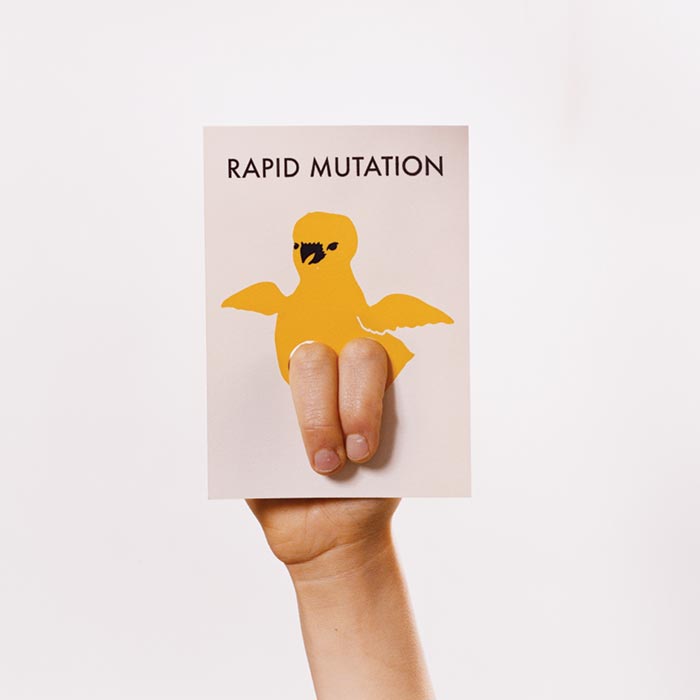“Ihave had an awful dream. My youngest sister appeared to me in deep mourning. She led me to a row of graves and named my brothers and sisters as those the graves enclosed. ‘I, too, am dead,’ she told me, ‘but God in his mercy has allowed me to spend this day with you.’ Then the dream faded and I awoke.”
Arthur Lapointe had survived fifteen months in the trenches, and the worst war in history was finally over. It was November 1918 and he would soon be going home to Canada, but he had received a letter saying that one of his brothers was dangerously ill. He was frightened by the dream, but he had lived amid death for so long that he thought it was just his imagination running wild.
It was not. What was to become known as the Spanish influenza first appeared in Haskell County, Kansas, in January 1918. A virulent new kind of influenza killed dozens of people in the sparsely populated county, and a local farm boy who was serving in the US Army carried it to Camp Funston, Kansas, where over 50,000 troops were training. The flu spread among them fast, but 1918 was the pivotal year of World War I, so troops continued to be shipped out to other camps and across the Atlantic to France. In about a month, moving mostly by rail and by sea, it spread to much of the world, but it became less virulent as it travelled. In the trenches in France they called it the “three-day fever,” and few became seriously ill.
The second wave was different. When the virus came back in September, it was a killer. It was probably worst in India, where as many as 20 million people died, but it took a terrible toll in North America, Europe, and everywhere else. Arthur Lapointe, however, had no idea what was happening because the media in the warring countries (including Canada) loyally downplayed the news or suppressed it entirely in order not to damage morale. In fact, the Spanish influenza got its name in part because newspapers in Spain, which was neutral in a world at war, were the most forthright with horrifying reports of healthy young men and women suddenly falling sick and dying in agony within a few days.
Lapointe was consumed with anxiety as the troop ship bore him home. His father and his brother Alphonse were waiting for him at the station in Mont-Joli in early February 1919 when the train pulled in from Halifax—but nobody else. “We did not tell you,” his father said, “for we wanted to spare you all the sorrow we could. The epidemic carried off your three brothers and two sisters in nine days.” It had been safer in the trenches.
In Quebec alone, the Spanish flu killed 13,800, and native people were particularly vulnerable. In Labrador, where the mail boat carried it to settlements along the coast, at least one-third of the native population died. In all, nearly 50,000 Canadians died. The worldwide second wave was followed by a third, beginning in February 1919, that killed in smaller numbers, but still in the millions.

There is good reason to fear that a similar outbreak is on its way. “The world is now in the gravest possible danger of a pandemic,” warned Dr. Shigeru Omi, the World Health Organization’s regional director for the Western Pacific, at a bird flu conference last February. In April, President Bush quietly signed an executive order adding “influenza caused by novel or re-emergent influenza viruses that are causing, or have the potential to cause, a pandemic” to the list of communicable diseases for which quarantine can be imposed in the United States.
If a flu pandemic hits, we will all suffer more or less equally whether we live in Canada or Cambodia. Viruses are not necessarily impressed by good hygiene or high living standards, and there are not enough intensive care facilities in the developed countries to make a substantial difference in the death rates if millions in those countries fall critically ill at the same time. No country has a sufficient stock of antivirals like Tamiflu to offer protection to more than a tiny fraction of its population, and vaccines would not be available for at least four months after a pandemic began.
Rich countries are now stockpiling antivirals and working on ways to mass-produce vaccines much more rapidly so that by 2007 or 2008 they may well be able to protect their populations from the worst effects of a pandemic. Unless there is an unprecedented outbreak of generosity in developed countries, however, the poor parts of the world will be as defenceless as we all are now, and it could be just as bad in those regions as it was in 1918. That pandemic might have killed as many as 100 million people out of a world population of 1.8 billion—more than 5 percent of the world’s population, in other words—in less than a year. (Estimates of the death toll vary because most flu victims actually died of pneumonia and because the poorer parts of the world kept only limited public-health statistics in 1918, but as modern experts mine the old data the consensus estimate of the 1918 death toll continually rises.)
It gets even worse, because a much higher proportion of the population in poor countries is in the younger age groups. Flu epidemics normally kill the very young, the very old, and other people with weak immune systems, but the 1918 pandemic aggressively targeted healthy young adults, mainly because their strong immune systems vigorously overreacted—a so-called cytokine storm—and killed them, often within a day, by destroying the lungs so rapidly that the victims suffered from oxygen starvation, their feet, hands, and faces turning blue or even black. They bled from the nose and sometimes from the ears and eyes as well. They suffered terrible headaches and joint aches, and at autopsy their lungs resembled those of people who had died of poison gas. Over half the deaths were in the eighteen-to-forty age group.
Given that the world’s current population is three-and-a-half times what it was in 1918, a pandemic of similar virulence could kill as many as 350 million people. With a couple of years to organize their defences, rich nations might be able to cut their death rates dramatically, but it would still be devastating. And nobody would escape the chaos as borders slam shut—and the global economy closes down—in futile attempts to halt the plague’s spread.

Like the great majority of the quick-killer infectious diseases that have emerged to ravage the human race, the influenza virus probably originated in animals that have always lived in relatively dense populations—waterfowl, in this case—and only colonized human beings after we started living in societies millions strong. Clusters of pre-civilized humans, living in tiny and relatively isolated hunter-gatherer groups, would not have been a suitable environment for highly infectious diseases since they would soon have run out of hosts and died out themselves. But you can always trust a virus to spot a new opportunity: the best estimate is that the lethal A strain of the influenza virus first moved from waterfowl to people about 2,500 years ago, probably via domesticated chickens that picked up the virus from wild ducks but were living practically under the same roof as their human owners.
Evidence is accumulating that all the A strains of human influenza originated in birds. Over time, many of these A strains have adapted to their new human environment and become less lethal only because human immune responses have improved. But new strains keep hopping across the species barrier, and some of them are killers when they first arrive. Three times in the eighteenth century, four times in the nineteenth, and three times in the twentieth century, an especially virulent new A strain of the influenza virus has caused millions of deaths.
And it’s coming again. One particular A strain, known as h5n1, has been widespread in wild water-bird populations in East and Southeast Asia for some time and is now migrating with them to Europe. It has caused close to 100-percent mortality in recent cases when it passed into domestic chickens. That is bad enough, but the worse news is that when the virus infects people who have contact with diseased poultry, the human mortality rate is more than 50 percent in reported cases. “It’s the worst virus I’ve ever seen,” said Dr. Robert Webster of St. Jude Children’s Research Hospital in Memphis, a leading authority on bird flu.
The first deaths from direct bird-to-human transmission of the h5n1 virus happened in Hong Kong in 1997, and the authorities responded by killing all 1.4 million domestic fowl in the city’s markets and surrounding countryside. But the virus keeps hopping into human beings—about 130 cases by the end of November 2005, according to the who—of those sixty-eight have died, mostly in Vietnam, but also in Thailand, Cambodia, and now in Indonesia and China.
All flu viruses mutate rapidly in order to get past the immune systems of their target species. That’s why you need to be vaccinated every year to have some protection against recent variants. In fact, human-adapted flu viruses mutate so fast that the vaccines are rarely fully effective against the most recent mutations, which is why a wave of flu travels around the world every winter, usually infecting up to 15 percent of the world’s people. Most suffer only a few days’ discomfort, but even in normal years significant numbers of people, mostly the very young and the very old, die of complications from the disease: roughly 1,000 a year in Canada.

Pandemic planning in Canada began in 1983, but the sars outbreak in Toronto in 2003 gave everybody an added sense of urgency. Establishing itself as a leader in the field, in February 2004 Canada released a comprehensive Pandemic Influenza Plan. “[Avian flu] is the most important threat currently to global health that we know of,” explained Dr. Frank Plummer, scientific director general of the National Microbiology Laboratory.
Plummer’s lab takes up most of the Canadian Science Centre for Human and Animal Health, a sleek new building that looks rather out of place in the nondescript north Winnipeg neighbourhood it calls home. You expect the stringent security measures, the Biosafety Level-4 containment lab and the researchers dressed in something closely resembling spacesuits, but the real surprise is the Emergency Operation Centre. It looks like an upmarket, miniaturized version of the famous norad command centre under Cheyenne Mountain in Colorado Springs, full of computer screens and windows that blank out when the proceedings inside must remain secret even from others in the building. It is from this room, together with a similar facility in Ottawa, that the war against a pandemic would be directed in Canada.
If the h5n1 virus becomes easily transmissible between people, it will probably happen first in China or Southeast Asia, where several hundred million rural families live in close proximity to their chickens, ducks, and pigs. Their domestic fowl are frequently exposed to the feces of the wild birds that are the main reservoir of the virus, and epidemics of avian influenza of increasing virulence have been hitting these domestic birds for the past eight years. In various attempts to contain the outbreaks, over 150 million birds have been killed. If the h5n1 virus does succeed in making the transition to a human-transmissible form, however, it would travel by air, as sars did, and arrive before Canada could close its borders. (It has no current plans to do so.) “By the time we did it, it would be here anyway,” explained Dr. Paul Gully, deputy chief public health officer of the Public Health Agency of Canada.
We are somewhat better equipped to deal with some of the side effects of a major flu pandemic these days than they were in 1918. We have antibiotics to deal with pneumonia and other bacterial infections that strike flu patients and ventilators to help them breathe while their lungs are being overwhelmed. But there is very little “surge” capacity in Canada’s health-care system (or anybody else’s). When twenty times as many people as usual are stricken with life-threatening infections, we cannot suddenly come up with twenty times as many hospital beds, twenty times as many ventilators, twenty times as many doctors and nurses. Not to mention the fact that health-care workers are just as vulnerable to the virus or may be at home looking after sick family members.
The world has some new antiviral medicines that offer significant protection against influenza viruses if taken within forty-eight hours of the onset of illness, but the current supply is not enough to cover even 5 percent of the population. Vaccines are the long-term answer but they must be matched to the particular strain of flu that is causing the problem, so you cannot start manufacturing them until that strain actually shows up. It then takes at least two months to identify the strain and devise and test the vaccine, plus further months to manufacture adequate supplies. Even if they had had today’s technologies in 1918 and had produced a vaccine against the Spanish influenza, at least half the victims would have died before the vaccine became widely available. In other words, despite all of our medical progress, we are not in a vastly better position to deal with an outbreak today than they were in 1918.
For many months there would be no vaccine, and panic would spread as people fell ill literally from one hour to the next. Schools, theatres, even churches would be closed, and most public transport as well—anything to reduce the virus’s opportunities to infect new victims. Absenteeism at work would soar, with many people staying in their homes and avoiding even their neighbours. The few people on the streets would be wearing surgical masks. Ordinary retail business would practically cease. All of these things happened in Canada in 1918.
If the pattern of 1918 held true, up to 40 percent of the population would get the flu, but the vast majority of them would suffer only the usual aches and pains and be back on their feet in four or five days. For the unfortunate minority, it would be a different story. They would be critically ill, in agonizing pain and struggling to breathe, some of them turning blue from lack of oxygen, and many would die. Morgues and funeral homes would fill up and overflow, and quite soon normal medical services would cease.
Dr. Huiming Yang, deputy chief medical health officer for Saskatchewan and a member of the province’s Pandemic Influenza Steering Committee, is quite clear about what would have to happen. “Now we aim at optimum care, but during a pandemic I would call it adequate care. For example, people can be sent home when they are recovering, if they are stable, just to have acute-care beds available. There would be triage centres and non-traditional care centres.”
The economic impact would be equally big. In August 2005, a bmo-Nesbitt Burns report by Sherry Cooper and Donald Coxe entitled “An Investor’s Guide to Avian Flu” concluded that the damage caused by “a pandemic, even one meaningfully less virulent than the 1918 influenza outbreak… could be comparable, at least for a short time, to the Great Depression” and “would trigger foreclosures and bankruptcies, credit restrictions, and financial panic.”
Life insurance companies would be decimated as their reserves failed to cover the huge wave of claims. Manufacturing industries would soon be hit by breakdowns in their just-in-time delivery systems, which often cross international borders and other boundaries that would likely be closed, and car production in Canada might actually cease. Food deliveries would be heavily disrupted, especially in winter when Canada depends heavily on American food imports, and that, combined with panic buying, would soon lead to empty shelves in shops.
Over the longer term, large numbers of deaths would lead to a surplus of houses and apartments and a collapse in real-estate prices. China and India would be especially hard-hit, and as their economies slowed, worldwide demand for metals and commodities, including oil, would face a similar collapse.

Though pandemics are a global threat, so far the responses have been mostly at the national level. The US National Institute of Allergy and Infectious Diseases recently field-tested a vaccine against an existing variant of the h5n1 virus in the hope that it might give some protection against a “humanized” version of the virus and plans over the next few years to develop similar generic vaccines for other “H” types of the influenza virus that currently exist only in animals, including (in keeping with who priorities) H5, H7, and H9. Researchers at the Atlanta-based Centers for Disease Control and Prevention are trying to combine avian and human influenza viruses in their laboratories in an attempt to see how lethal and how infectious various combinations are. The Bush administration put forth a plan to spend $7.1 billion (US) to stockpile antiviral drugs, encourage the development of vaccines using cell cultures to allow for faster production than the current technology (which uses chicken eggs) and help other countries to train their medical personnel to detect and contain any outbreak of pandemic influenza. But the initiative stalled in Congress and it is not clear whether it will be revived.
Britain, after a slow start, has gone into high gear, ordering 14.6 million treatments of Tamiflu, with each representing a course of ten pills. (The United States, with nearly five times the population, has ordered only twenty-three million treatments.) Britain has also signed “sleeping contracts” with drug companies under which the state will pay the corporations to build vaccine-production facilities, enough to adequately cover the entire British population. Researchers at the National Institute for Biological Standards and Control in London are using a technique called reverse genetics, which involves merging genetic information from laboratory viruses and active avian viruses in order to create prototype viruses. These could be “grown” very quickly to produce a possible avian vaccine. But neither Tamiflu, nor the hugely expanded vaccine-production facilities, nor the experimental high-speed production technique will be available outside of Britain in the immediate future—it’s all about protecting the British population, with barely a nod to the global dimension of the problem.

China is struggling to overcome the mistrust that other countries have felt ever since it concealed the sars outbreak from the world—a mistrust that returned when it concealed its first human case of avian flu (in Hunan province in October 2005) for three weeks before consulting experts at the World Health Organization. Huang Jiefu, one of China’s vice-ministers of health, promised to close China’s borders if a single case of human-to-human transmission of bird flu is detected in the country. In mid-November the government declared that it would vaccinate its entire domestic stock of fourteen billion chickens, ducks, and geese (20 percent of the global total) against bird flu in order to make that contingency less likely. The vaccine is cheap and it works fine, but it must be administered one bird at a time. Since three-fifths of the domestic fowl in China are family-owned birds that are free to wander around the home, the yard, and the entire neighbourhood, one doubts that the job will be done quickly or comprehensively. As for antivirals and human vaccines, China says not a word.
Then there is Canada, one of the world’s vaccine superpowers. In 2001 the Canadian government contracted with ID Biomedical, currently based in Vancouver, to develop the infrastructure to supply all Canadians with vaccines solely from domestic production, and last year it asked the firm to raise its production capacity to eight million doses of vaccine a month. Even allowing for two to three months to identify the new pandemic virus, create the vaccine, and test it before going into mass production, the whole Canadian population could be covered in as little as seven months. What the British are planning to do over the next several years, Canada has already done.
Barring the development of new techniques for rapid vaccine production, Canada would be one of the few hopes poor countries have of getting early access to an avian flu vaccine since no government could export vaccine until its own population was inoculated. None of the other countries that can mass-produce influenza vaccine (there are only nine of them) are likely to reach that point in less than a year. Canada would be able to start sending vaccines abroad only seven or eight months after the pandemic hit. But who gets it? How do you decide? Hard choices like this will abound in the midst of a pandemic, but the hardest choice is being made right now: will each country concentrate on preparing to protect its own population in a pandemic or will there be large-scale international co-operation to contain the pandemic and minimize the losses?
Be realistic: my kids come first. Once they’re relatively safe, I’ll worry about your kids too. There will be international co-operation in dealing with the pandemic only to the extent that it does not degrade an individual country’s ability to protect its own citizens or that it actually offers a reasonable prospect of improving everybody’s chances of survival. But those two categories together cover an awful lot of territory.
Take the shortage of Tamiflu, which is affecting everybody. Some forty governments have ordered millions of treatments of this antiviral, but the bulk of the orders will not be filled until some time in 2006 or even 2007. The problem, says Swiss pharmaceutical giant Roche, once the sole manufacturer, is that the production process takes ten steps and twelve months and cannot easily be subcontracted to other companies because of its complexity. That is also the reason Roche maintains it must charge so much for it, even if this severely restricts the amount that governments can buy. Canada, for example, has already bought 1.6 million treatments of Tamiflu. But that stockpile, even when added to existing reserves, would cover only one in twelve Canadians.
But two Asian organizations, Cipla Ltd. Pharmaceuticals of India and Taiwan’s National Health Research Institutes, reported in October that they had made batches of Tamiflu with no great difficulty, whereupon Roche admitted that the difficulties of production may have been overstated. US Senator Charles Schumer began threatening legislation that would force Roche to license other companies to produce Tamiflu, and Roche suddenly announced that it would talk to four generic drug manufacturers about the possibility of raising production. In November it revealed that it would be able to boost its own annual production to 300 million Tamiflu treatments by the end of 2006.

The greatest potential for international co-operation is in mounting an attempt—which could prove quixotic—to identify a lethal new strain of human-transmissible influenza at its point of origin, probably in Southeast Asia, and hold it there long enough for a vaccine to be developed and distributed.
In early August two studies in leading scientific journals, Nature in Britain and Science in the United States, offered models of how a pandemic might be nipped in the bud. The Science report, written by Dr. Ira Longini, simulated an outbreak of human-transmissible avian influenza in a rural Thai district of half a million people. So long as the area was quarantined and healthy people closest to those infected by the virus were given antiviral medicine within twenty-one days of the first case being detected—and so long as each victim infected an average of only 1.6 other people—then a pandemic could be prevented with the use of between 100,000 and one million treatments. “The who should get priority [for Tamiflu] and the richer nations should chip in,” Dr. Longini told the British press, “because it’s in their interests to stop [the pandemic] before it reaches their shores.”
The report in Nature by Dr. Neil Ferguson was even more hopeful. He found that if an outbreak of human-transmissible flu was detected in its infancy, with no more than forty people infected before a targeted containment policy was imposed and with each subsequent case isolated and treated within two days, there was a good chance that the pandemic’s spread could be prevented. “Nobody’s going to say it’s guaranteed to work but the benefits are so huge,” Dr. Ferguson was quoted saying. “If there was enough planning, preparedness and commitment from the countries in the region, this strategy is probably feasible in practice.”
Roche can donate the Tamiflu; Canada can (and does) bring Vietnamese health officials to the National Microbiology Laboratory to upgrade their skills and sends two-person mobile lab teams from Winnipeg to Southeast Asia; academic researchers can model the ideal response everybody can do their bit—but in the end the world’s chances of escaping what Dr. Ferguson calls “an event worse than the 1918 Spanish flu pandemic” depend mainly on the local medical surveillance networks that might spot an outbreak early enough.
In Thailand the government has created a network of 750,000 volunteers spread throughout the country’s villages and towns who are trained to spot and report both poultry and people suffering from avian influenza. An h5n1 infection could be confirmed within twenty-four hours, a one to two-day investigation would follow, and, the government believes, appropriate action could then be taken. But neighbouring countries such as Cambodia and Indonesia are much less well-prepared, and they are not getting enough help and encouragement to build similar surveillance systems. Dr. Huiming Yang sees it all very clearly: “Most developed countries have [pandemic influenza] plans in place; most developing countries don’t. If we can help them and slow the spread, we can buy some time for ourselves. Without that, the virus is only a flight away.”



